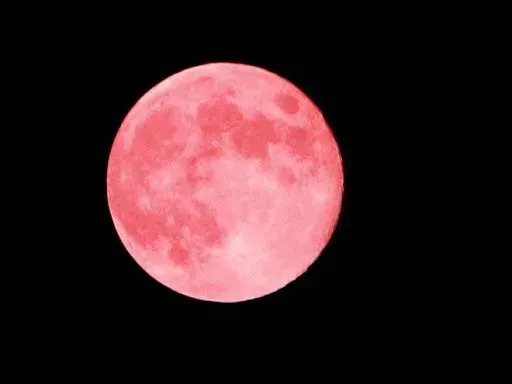A pink full moon is expected this week in the night sky right after the peak of the Lyrid meteor shower, according to specialized publications, UNN reports.
Details
According to the Time and Date website, which tracks astronomical phenomena, the Lyrid meteor shower peaks this year on April 21-22. At this time, as indicated, you can see up to 18 meteors per hour.
The shower is most visible to people in the Northern Hemisphere, said Ashley King, a PhD candidate in planetary science at the Natural History Museum in London, CNN reports. Those wishing to see the Lyrids should let their eyes adjust by going outside for at least 10-15 minutes before trying to spot the meteor, King added. Since meteors can appear all over the sky, experts do not recommend using a telescope or binoculars, according to NASA. "The best time to go out (to see a meteor) is very early in the morning before the sun comes up," King said.
Lirids, one of the oldest known meteor showers, started on April 15 and will run until April 29.
The pink moon, as the April full moon is called, according to CNN, will be visible to everyone around the world as the Earth's natural satellite will appear full for several days. According to Time and Date, the full moon will rise at 2:48 a.m. (Kyiv time) on April 24.
Despite its name, this full moon will be like no other, said Paul Gain, a planetary scientist at the University of Colorado Boulder. The pink moon actually gets its nickname from its annual appearance shortly after the start of spring, according to the Old Farmer's Almanac.
It is best to observe the full moon with binoculars or even just the naked eye, as it may be too bright to look at through a telescope, said Hein.
According to EarthSky, out of 12 full moons in 2024, the lunar events in September and October will be supermoons.
Here are the full ones remaining until the end of 2024:
- May 23rd: Flower month
- June 21: Strawberry Moon
- July 21: Deer Moon
- August 19: Sturgeon month
- September 17th: Harvest Moon
- October 17th: Hunting month
- November 15th: Beaver Moon
- December 15th: Cold month
Meteor showers in 2024:
- Eta-Aquarides: May 4-5
- Southern Delta Aquarists: July 29-30
- Alpha Capricornidae: July 30-31
- Perseids: August 11-12
- Dragonids: October 7-8
- Orionids: October 20-21
- Southern Taurids: November 4-5
- Northern Taurids: November 11-12
- Leonidas: November 17-18
- Heminids: December 13-14
- Ursids: December 21-22
